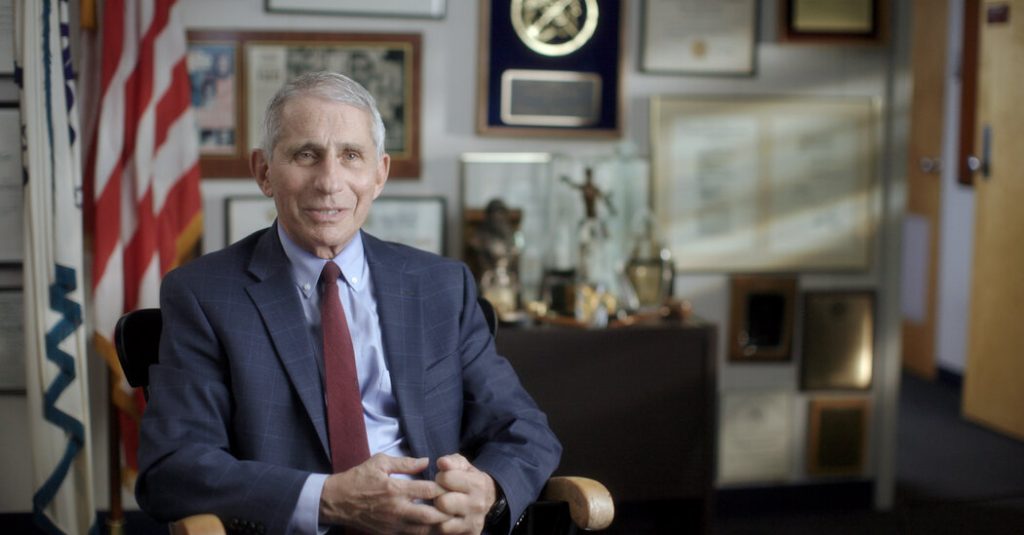
In their sympathetic portrait “Fauci,” John Hoffman and Janet Tobias introduce Dr. Anthony S. Fauci, the director of the National Institute of Allergy and Infectious Diseases, with a split-screen. On one side, the man who has been the face of the nation’s Covid-19 response leaves his home with a security detail. Next to this gray-haired public health figure unspools news footage of a younger Dr. Fauci walking up stairs to begin, as a reporter states, “his 12-hour day.” At the time, he was leading the nation’s H.I.V./AIDS response.
Scenes of angry protests follow this deft setup. Activists from ACT UP, the AIDS Coalition to Unleash Power, wave placards and shout invective in the late-1980s. A man douses masks with lighter fluid and sets them aflame at a Covid-19 protest. The ire may look similar, but the film makes it clear that there is a dramatic difference. As angry as the AIDS activists were, they were not rejecting science. They were pushing researchers to do better, demanding that the U.S. government and Dr. Fauci, as its chief researcher, act with urgency.
“Fauci” is at its best when it draws parallels between the pandemics that define Dr. Fauci’s career. It vexes when it leans on straightforward biography. Interviews with Dr. Fauci’s wife, Dr. Christine Grady, and his daughter Jenny Fauci are thoughtful, endearing and protective. But the timing of the documentary’s more traditional biographical gestures feels more appropriate to a retrospective consideration, one that has the current pandemic in the rearview mirror. Dr. Fauci himself offers a helpful rebuff to the documentary’s more adulatory notes: “The enormity of the problem keeps me grounded,” he says.
Fauci
Rated PG-13 for the uncensored speech of protests, and images of grief and death. Running time: 1 hour 44 minutes. In theaters.
You may also like
-
Interview with Gui Pimentel and Rodrigo Duarte
-
Celebrating Diversity and Excellence: Mrs Universal Empire’s International Gold Awards Ceremony in Muscat
-
Ari Kim: Crafting Cinematic Tales in the Heart of NYC
-
Mike Mizzle: The Rising Star Taking Social Media by Storm!
-
Jose Comelon: The Giant of Children’s Content, Number 1 on Netflix!

